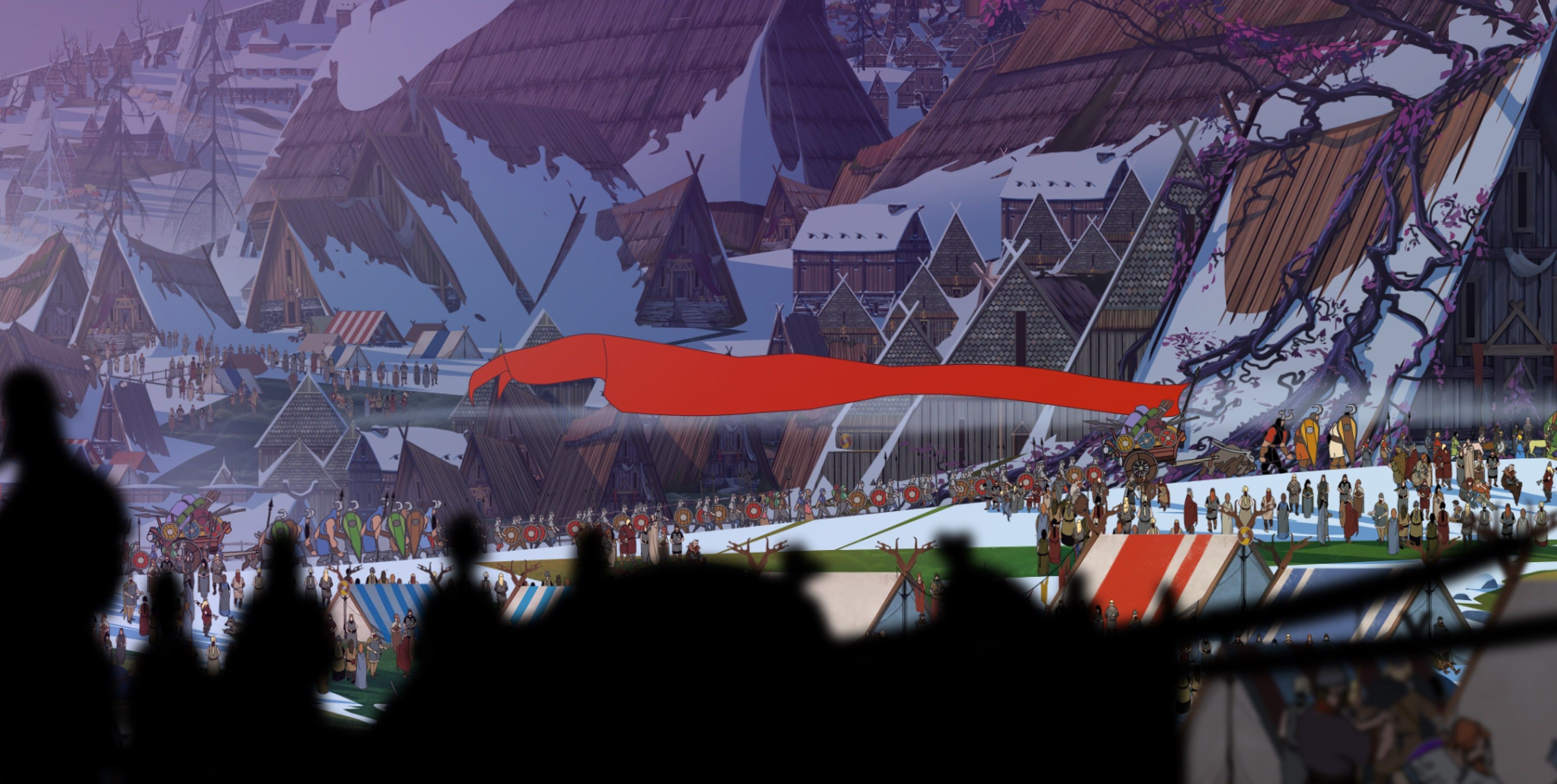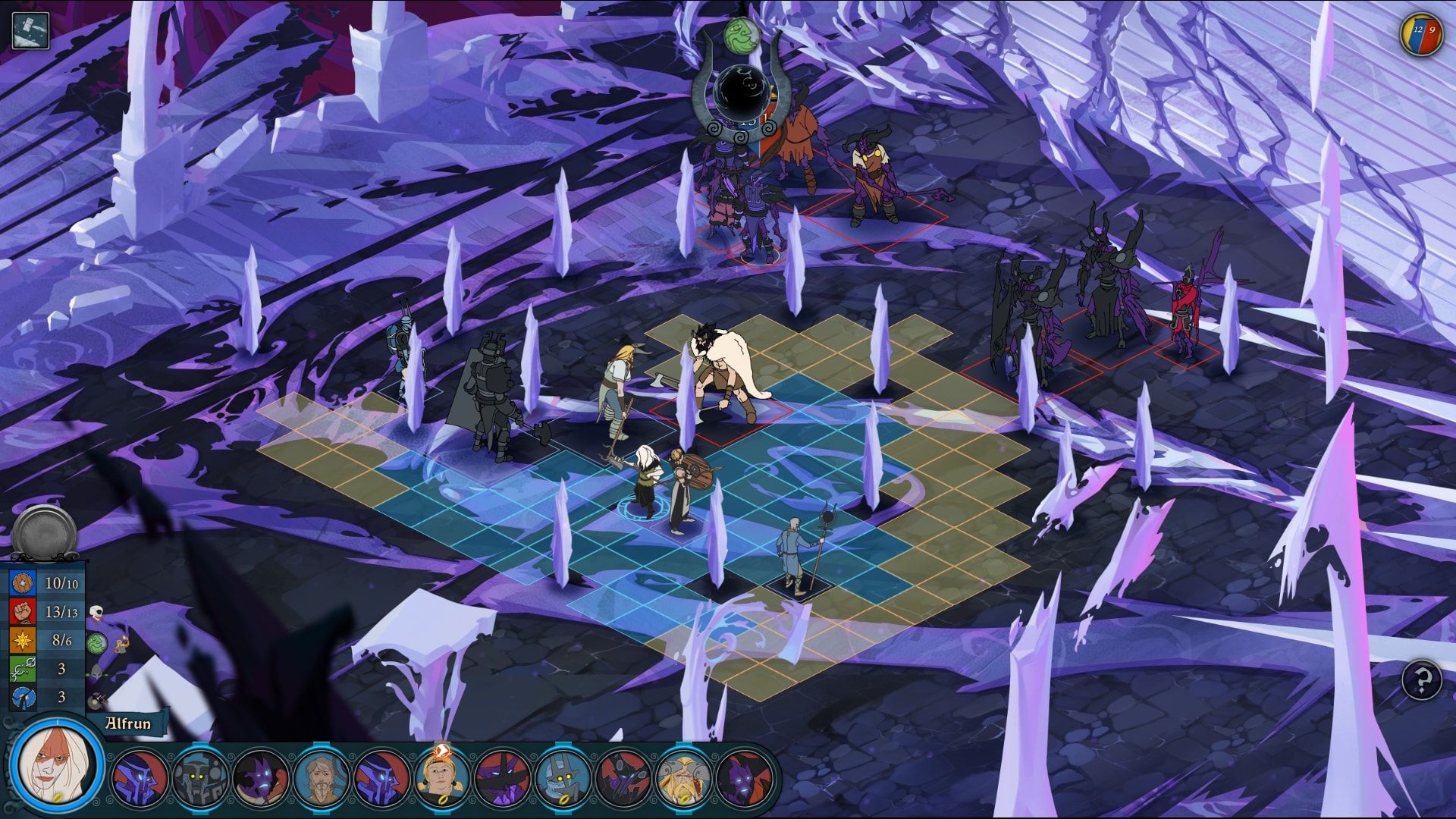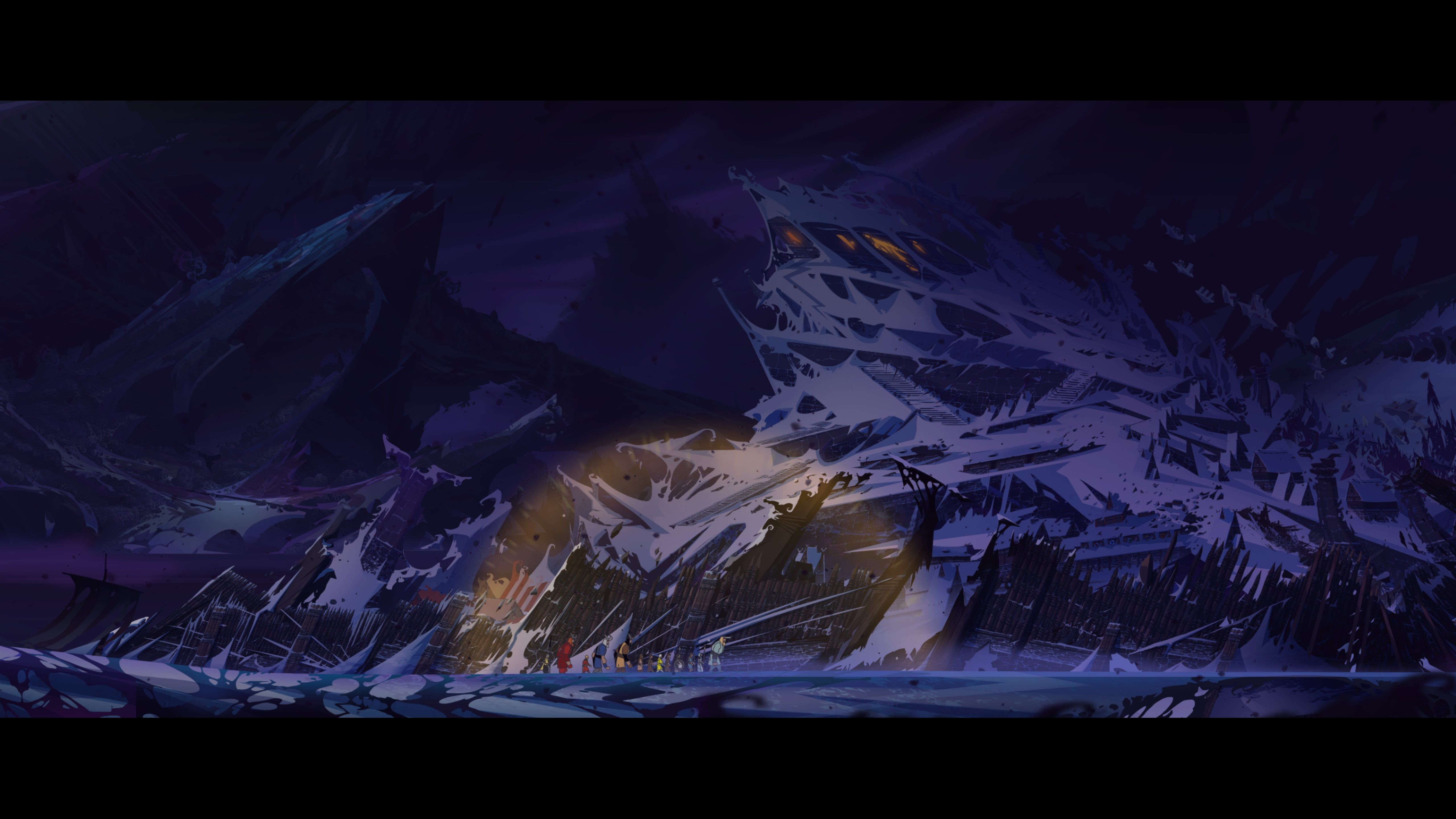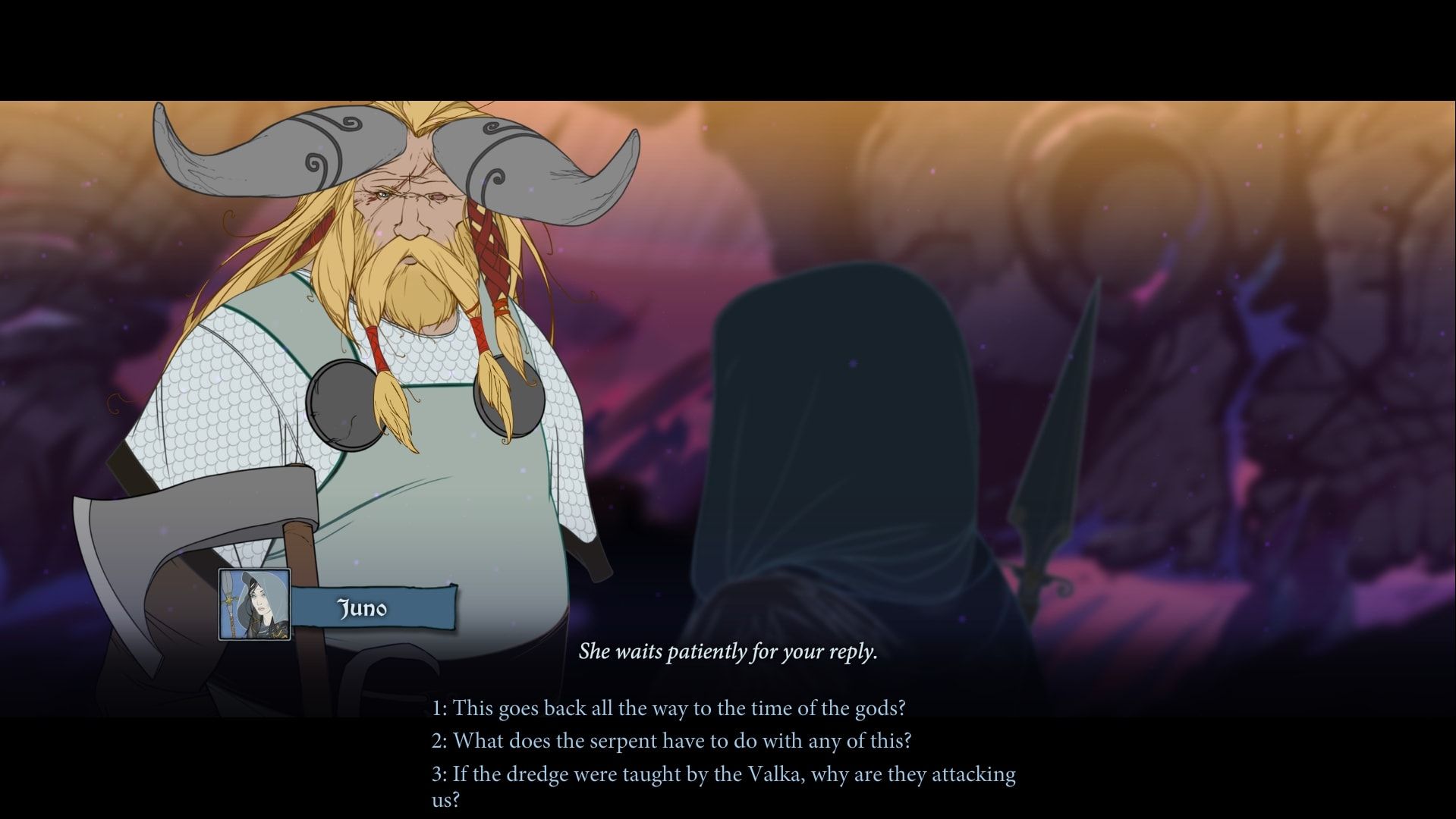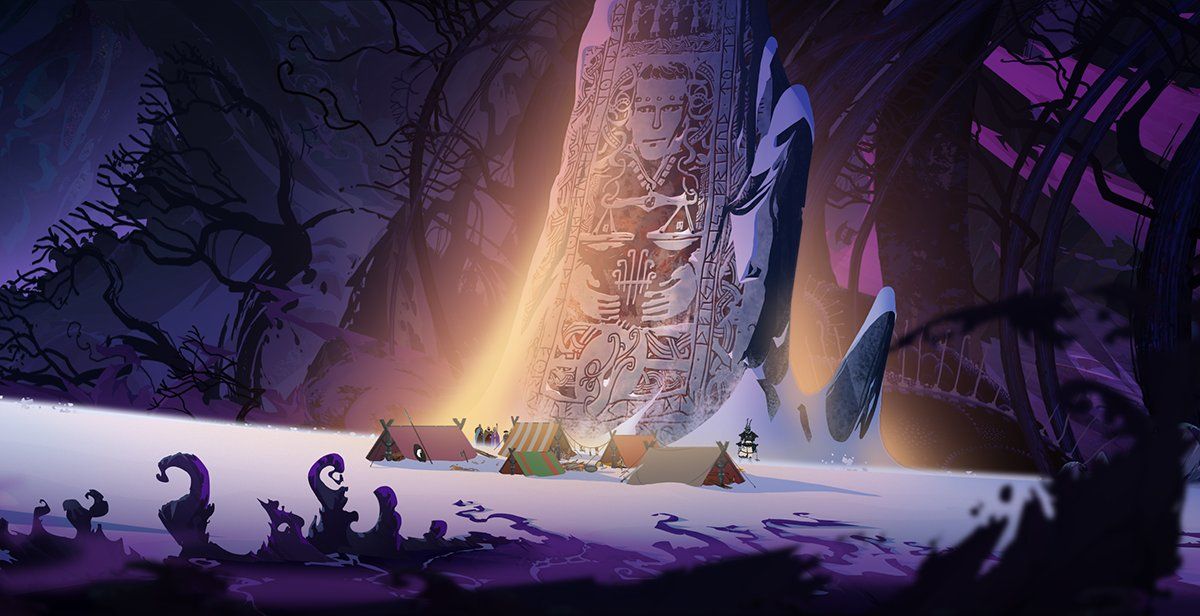Since the debut of their first game in 2014, Stoic Studio -- a team comprised of former developers from BioWare -- have been telling a Norse-mythology inspired story in the form of The Banner Saga series. The strategy-RPG series debuted after a wildly successful Kickstarter campaign (followed two years after by its sequel, The Banner Saga 2), and now the series is coming full circle with The Banner Saga 3, the story's final chapter that will release in late July for consoles, PC, and mobile.
Ahead of its upcoming release next month, we had the chance to speak with Stoic Studio producer Zeb West and lead designer Matt Rhoades to hear a bit more of the work that the studio is putting into the final chapter of its fantasy strategy-RPG series.
Specifically, we delved a bit deeper into the new features and gameplay elements that Stoic is incorporating into The Banner Saga 3, how the series' final chapter will wrap up a trilogy's worth of storytelling, and a bit of detail on what to expect from the studio after The Banner Saga's conclusion.
Ryan: After your studio has now worked on and launched two games in The Banner Saga series, what have been your development goals with The Banner Saga 3, especially knowing that it would be the final chapter of the series?
Matt Rhoades (Lead Designer, Stoic Studio): I think my goals from a design standpoint were two-fold. First of all, to really make sure that we were paying off on giving people an ending to this trilogy that was satisfying to them and that was going to really kind of deliver on all the choices that they've been making over the course of these three games. And then secondarily, to make sure that the third game felt like it still had something fresh and different to offer people, I think especially players going from [The Banner Saga] 1 to 2.
The Banner Saga 2 polished the battle system a lot, it introduced some new things, but it felt very much like a continuation of the first one. And for the third one, I don't want to suggest that we've completely overhauled everything, but I feel like there is a lot more variety to the battles and different things going on in the battles that will help make it feel a little fresher relative to the other two games. So those were my two goals, and I think we delivered on them.
Zeb West (Producer, Stoic Studio): From the producer standpoint, Stoic has kind of grown from being a three-person indie studio to being a 14-person studio that has two locations in Seattle and Austin. Over that time, it's taken us shorter and shorter amounts of time to release these games on all platforms, so one thing that we're really excited about that just sort of demonstrates the "growing up" of our small indie studio is being able to release [The Banner Saga 3] in like 10 languages on all platforms, basically at the same time.
That's something that just seemed so distant when we first started, and we're just a really tiny team: we were so single-threaded we had to kinda trickle that out before. So, it's kinda fun to be in a place where we can actually deliver on all platforms so that players can all play it on whatever system that they want from day one.
[pullquote]"There is a lot more variety to the battles...that will help make [The Banner Saga 3] feel a little fresher relative to the other two games."[/pullquote]
R: With The Banner Saga 3, your team went back to Kickstarter to fund development and get community feedback (like the first game), compared to working with a larger publisher on The Banner Saga 2. What was the experience like going back to that crowdfunding model for developing this game?
ZW: We really missed using Kickstarter for the second game. I mean, we thought like everyone else did that Kickstarter is a mechanism for kickstarting a business, and it did do that for this business, for sure. But, in the same way our indie studio has grown and changed, so has Kickstarter as a platform; it's become much more of a mechanism to find your "hardcore fans" and to find new fans that can look at your previous project and be like "Wow, okay - they delivered on that and they sort of brought everybody along with them as a community."
We really kind of picked up and brokered that community into a cool group of people that love to do fan art, they love to do fan fiction and videos involving our characters, weird pictures of our Vikings playing basketball against the Dredge, and stuff like that. It's just really cool to see that sort of level of communication that we thrive off of, that we feel like "Wow, this is hitting an audience and they value it." That's the main thing that brought us back to Kickstarter for the third game and really just wanting to create that structure.
We've done alpha battle content and we've gone back and done single-serving battles where we got some valuable feedback on the battle wave system, which is new for The Banner Saga 3. Stuff like that I think is invaluable to sort of get that feedback during development.
MR: Yeah, it really is. And just to have a community of people to bounce an idea off and say "Well, we're thinking about making this change: how do you guys feel about that?" Just to have some outside folks that we can kind of be in communication with who are both intimately familiar with our games but still have that kind of outsider's perspective on things.
One of the things about game design is that you get into the weeds so heavily that it can be difficult sometimes to really see the full ramifications of a choice that you're making. So, to have some outside people say "Woah, you know if you make that change it's really going to affect This, This, and This that we really count on," to know that okay, well if I'm going to do that, I need to really make sure that I'm taking those things into account, is incredibly useful.
[pullquote]"We have a caravan that is moving through 'The Darkness,' this kind of apocalyptic dark energy that is sweeping across the whole landscape."[/pullquote]
R: One of the biggest changes that I noticed between The Banner Saga 1 and 2 is how, like you said earlier, the second game added some more variety and unpredictability to the battle system. What are some of the more specific changes with The Banner Saga 3, as far as the combat and gameplay?
MR: So for The Banner Saga 3, as we have in the previous games, we have two different caravans. We have a caravan that has reached the last human city of Arberrang, and is kind of stationary there, and then we have a caravan that is moving through "The Darkness," this kind of apocalyptic dark energy that is sweeping across the whole landscape. We've tried to make it so that the battles in each of these environments actually end up feeling pretty distinct from one another.
The caravan that is moving through The Darkness has Iver in it, it has Juno, and it has Eyvind. And if you remember at the end of The Banner Saga 2, they got the Spear of the Valka from the Tower; that's one of the things that they were doing at the very end of the game when Iver has to fight Bolverk.
So what we've actually done is we've replaced the Warhorn -- that's been kind of a staple of battles in the previous two games -- in The Darkness with the Valka Spear, which has a huge effect on battles because you can no longer just sort of have "pocket Willpower" whenever you want it. And instead, you have pocket Arc Lightning whenever you want it, which ends up making a huge difference because you can plink at enemies if they are in the right position and you can get these great chains. Yet, you have to be much more careful with regulating your Willpower and keeping an eye on how you're using it because you don't just have it whenever you want it based on killing enemies. I find that it has a huge effect on the rhythm of gameplay and just makes it feel really distinctive.
I think the other thing is that we've introduced wave battles, and we have some in Arberrang as well, but they are very much of a feature in The Darkness. We've had battles where you had enemies add in over time, but this is kind of distinctive in that you actually have a timer and it's counting turns. If you can beat that timer, you have a chance to bring in fresh units before the next wave hits.
What I've found is that it's giving players a chance to really explore kind of their "deep bench" a little more, because players tend to have "favorites" that they throw into their party all the time. But now it's like "Okay - I beat that wave and there's another wave coming in, my units are maybe a little beat up from that last battle, but now I can bring in fresh units." And maybe they're units I wouldn't have used ordinarily, but now I have a reason to bring those guys in because they have all their Strength, they have all their Armor, they have all their Willpower. It's giving people a chance to really play around with units that were kind of backbenchers before, and that's awesome because we feel like all the characters in our game have really cool stuff to offer, and for players to have an incentive to use more of them is really cool.
[pullquote]"The really important thing for us is that we continue to give players choices in The Banner Saga 3 that are meaningful and impactful."[/pullquote]
R: The Banner Saga series has obviously had a pretty heavy reliance on storytelling and players having to make decisions that affect the outcome of how their story progresses. What has that experience been like for The Banner Saga 3, as far as wrapping up the story you have been telling over the course of three games, but also doing it in a way that players feel like they have their own sense of resolution from the story?
MR: It's been really complicated and cool and challenging. From a technical standpoint, obviously a lot of it comes down to just sort of figuring out what variables are we tracking, what can we bring in, what do we need to make sure that we pay off on that our fans are really excited about. It's been a really interesting challenge to find all these different ways to bring in aspects of the earlier games and the choices that players have made, and make that into something that is compelling.
One of the neat things for me, just as someone working on it, is that it's really given me a reason to go back and look at the first two games in a different light and say "Oh, what do we need to make sure that we're paying off on here?" The really important thing for us is that we continue to give players choices in The Banner Saga 3 that are meaningful and impactful, and that when they actually reach the ending, they see that all the choices that they've made throughout all three games that many of those choices end up culminating in the ending that they get.
So that's been one of the biggest ongoing discussions throughout development; how many endings do we have? How do we make sure that each of those is really distinctive? And what are the little permutations that work into those larger kinds of ending "buckets" to make them feel even more distinctive and personalized to each individual player?
ZW: We've had a parallel conversation with Austin Wintory [the composer of The Banner Saga series] about that kind of stuff too. Because not only do we want the story to give a sense of resolve, but what gives you that sense of high fantasy is also there in the music. That kind of takes you on that emotional journey you want to have following these characters on this epic scale, and sort of seeing and feeling it resolve.
So Austin Wintory also had this sort of stretch to provide closure for endings that also were on the different spectrum where it's like "Wow, this is a really different musical ending: this many people survived versus this catastrophe happening versus this person being lost." So it was kind of fun to see him have to sort of work through all that stuff, as well.
R: Aside from The Banner Saga 3's release, you also most recently brought over the first two games to Nintendo Switch. What was it like bringing the series over to Switch, and what has the reception for the games been so far on the system? Did you always have in mind bringing these games over to the platform?
ZW: We've had a great reception on it, and from the get-go, we knew that we wanted to port it over to the Switch. We've been kind of bandwidth-constrained until we sort of slowly staffed up to be able to sort of work on projects in parallel. You know, if you think about it that at the same time we were ideating on The Banner Saga 3 and nailing down the story, it was also the same time we were running the Kickstarter, and trying to do a porting project, and working with some outside partners. From our perspective, it would have been slow to get to the Switch but we knew that we wanted to get there eventually and we're excited to be able to release The Banner Saga 3 digital in parallel with the other platforms, too.
But the response has been really great. We had already kind of done some of the upfront work because we released our games on mobile already, so we already figured out the touchscreen configurations. We kind of designed the games originally with a touchscreen in mind because we were like "This would be a great game on the iPad." So having done that work and already ported to PlayStation and Xbox, we already had a controller scheme as well and stuff like that. The rest was really just working with our porting partner Shiny Shoe here in San Francisco to help us just get it onto the platform.
[pullquote]"We're very keen to keep The Banner Saga flame alive and to find other ways to keep telling stories in that world over time."[/pullquote]
R: With The Banner Saga 3 being the final installment in this series and sort of putting a bookend on this world, is there any chance that you would go back to The Banner Saga universe, whether that's in spin-off games or exploring it in other mediums?
MR: Yeah, definitely. We've talked about doing DLC, and we've definitely talked about wanting to revisit the world. One of the things that we've done over the course of these three games is that there's been a lot of world-building that's gone in. There's a very deep history of the world, and so there's a lot of room there for exploration, both in games and in other media.
We're certainly not announcing anything at this point, but yeah; we're very keen to keep The Banner Saga flame alive and to find other ways to keep telling stories in that world over time.
R: That being said on finishing up The Banner Saga series, what is coming next from Stoic Studio?
MR: Obviously we're going to continue to support The Banner Saga 3. After post-release, we've already announced that we're going to do a Survival Mode like we did for The Banner Saga 2, and we're going to have Eternal Arena, which is gonna be yet another kind of gameplay mode for players who want to explore systems and things in a different way. So that will definitely be one of the things that will happen.
In terms of our next game -- you know, we're kind of in a "blue sky" period right now. We're not announcing anything and we're taking some time to kind of figure out what we want to do next. We want to make sure that whatever we do stays true to who we are as a studio, and that it's something that we are excited to be working on.
The Banner Saga 3 will release for PS4, Xbox One, Nintendo Switch, PC, Mac, iOS, and Android on July 26th, 2018. For more on the game, stay tuned for our upcoming preview of its first few chapters.

